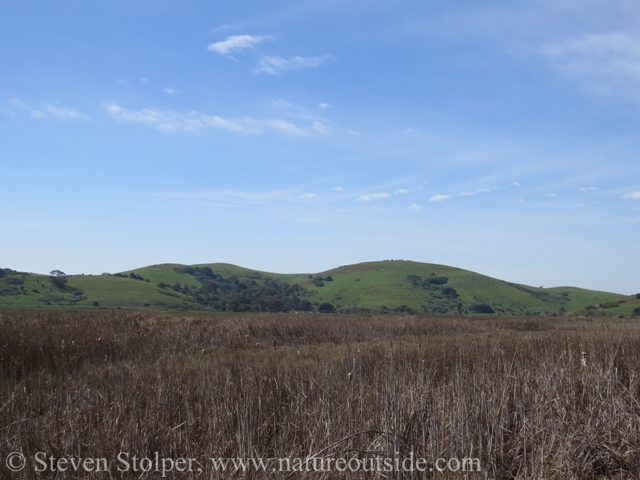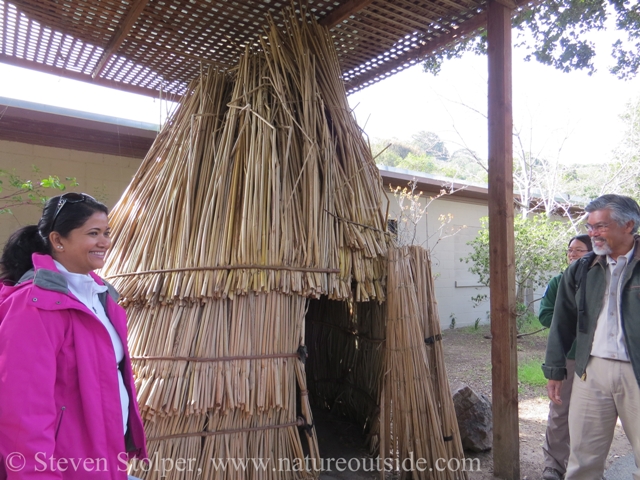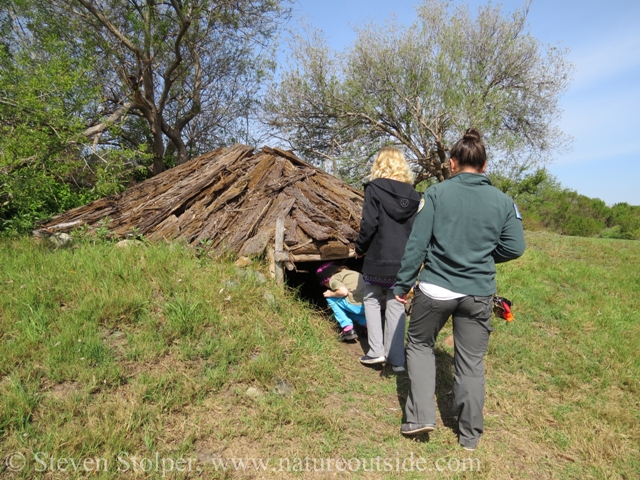Hi Everyone!
Imagine going back in time 475 years.
The year is 1540. You are a Native Californian living along the coast of what is now called San Francisco Bay. What would your life be like?
I visited a replica village to learn about the Tuibun Ohlone of California, and how they lived long ago. I was eager to learn about the Tuibun because of where they lived. The village site sits within one of the vast freshwater marshes that surrounded San Francisco Bay. I wondered what it was like to live in a marsh environment, and how the people used the plants and animals around them.
You can see the jungle of dry tule that obscures the freshwater marsh.

Our group explored a tule house and learned about its construction.

Finally we visited the archaeological site of Tuibun village. The village is estimated to be more than 2,000 years old.

I omitted construction and ethnobotony details from this post. But I learned a tremendous amount!
We were able to handle replica tule saws made from deer scapula as well as rabbit blankets. I will post about the tools and the other structures we explored as soon as I get the chance.
Have you had the opportunity to visit replica villages or archaeological sites? Did you pick up any bushcraft tips from visiting them?
- Woodsorrel
Imagine going back in time 475 years.
The year is 1540. You are a Native Californian living along the coast of what is now called San Francisco Bay. What would your life be like?
I visited a replica village to learn about the Tuibun Ohlone of California, and how they lived long ago. I was eager to learn about the Tuibun because of where they lived. The village site sits within one of the vast freshwater marshes that surrounded San Francisco Bay. I wondered what it was like to live in a marsh environment, and how the people used the plants and animals around them.
You can see the jungle of dry tule that obscures the freshwater marsh.

Our group explored a tule house and learned about its construction.

Finally we visited the archaeological site of Tuibun village. The village is estimated to be more than 2,000 years old.

I omitted construction and ethnobotony details from this post. But I learned a tremendous amount!
We were able to handle replica tule saws made from deer scapula as well as rabbit blankets. I will post about the tools and the other structures we explored as soon as I get the chance.
Have you had the opportunity to visit replica villages or archaeological sites? Did you pick up any bushcraft tips from visiting them?
- Woodsorrel
